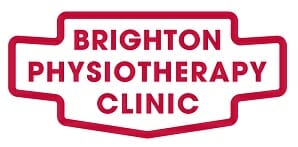Treatment for Myofascial Pain Dysfunction
What is myofascial pain dysfunction?
Myofascial pain dysfunction, also known as myofascial pain syndrome (MPS), is essentially a mild way of describing muscle pain and inflammation of the body’s tissues. Myofascial pain dysfunction is a common condition characterised by severe pain in specific muscles in the body. Pea-sized knots, called trigger points in the body, usually cause this.
When pressure is applied to these points, it causes pain in another part of the body. This type of pain is called referred pain. Almost everyone experiences muscle pain at one time or another, but it typically resolves on its own after a few days or weeks. But when muscle pain persists, it is myofascial pain dysfunction.

Diagnosing myofascial pain dysfunction
Because myofascial pain dysfunction is similar to other primary or secondary pain syndromes, there is no exact test to determine if you are suffering from myofascial dysfunction. However, your doctor can rely on your description to determine the severity of your pain condition.
Your doctor will also likely feel your muscles to identify trigger points. These points can be identified if you experience pain when pressure is applied to specific areas of your body.

Treating myofascial pain dysfunction
Ordinary muscle pains can be treated with over the counter painkillers and anti-inflammatory medications. When it comes to myofascial dysfunction, however, extra efforts are required.
Some of the more popular ways of managing and treating myofascial pain dysfunction include:
- Massage and physiotherapy: These include special exercise programmes and massages that will gently stretch the muscles without causing further pain.
- Trigger point injections: Composed of local anaesthetic and steroids, trigger point injections can greatly reduce the pain and stiffness associated with myofascial dysfunction.
- Dry needling, similar to acupuncture: Dry needling is similar to the acupuncture process, but involves smaller clinical needles. Evidence shows that inserting needles into the trigger points can provide relief from trigger point pains.
Getting help
Studies suggest that about half the population in the UK suffers from chronic pain. In this number, 3% are women suffering from myofascial pain syndrome, while 1% are men. This condition typically affects people between the ages of 35 and 55.
Myofascial pain syndrome can hamper productive activity if not treated. Therefore, if you suffer from chronic muscle pains, proper physiotherapy and osteopathy will help you discover the problem and provide a lasting solution. Contact us today on 0000000000 to get the help you need for your spinal condition.
Myofascial Pain Dysfunction FAQ’s
The infected area of the muscles, if not treated on time, can cause muscle degeneration,
inflammation, and eventually, myofascial dysfunction.
